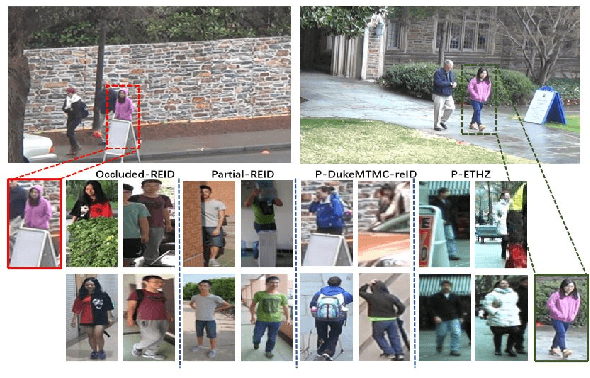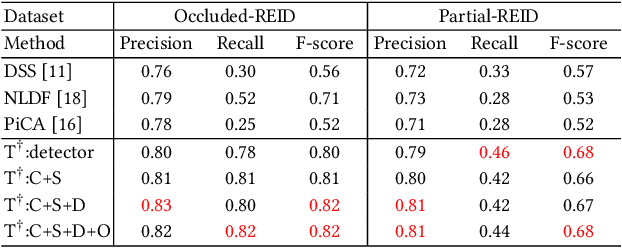A Novel Teacher-Student Learning Framework For Occluded Person Re-Identification
Paper and Code
Jul 07, 2019



Person re-identification (re-id) has made great progress in recent years, but occlusion is still a challenging problem which significantly degenerates the identification performance. In this paper, we design a teacher-student learning framework to learn an occlusion-robust model from the full-body person domain to the occluded person domain. Notably, the teacher network only uses large-scale full-body person data to simulate the learning process of occluded person re-id. Based on the teacher network, the student network then trains a better model by using inadequate real-world occluded person data. In order to transfer more knowledge from the teacher network to the student network, we equip the proposed framework with a co-saliency network and a cross-domain simulator. The co-saliency network extracts the backbone features, and two separated collaborative branches are followed by the backbone. One branch is a classification branch for identity recognition and the other is a co-saliency branch for guiding the network to highlight meaningful parts without any manual annotation. The cross-domain simulator generates artificial occlusions on full-body person data under a growing probability so that the teacher network could train a cross-domain model by observing more and more occluded cases. Experiments on four occluded person re-id benchmarks show that our method outperforms other state-of-the-art methods.
 Add to Chrome
Add to Chrome Add to Firefox
Add to Firefox Add to Edge
Add to Edge